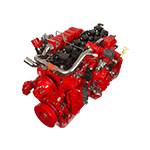Oct . 31, 2024 03:31 Back to list
what happens when brake drums get hot
When brake drums get hot, several critical factors come into play that can impact vehicle performance and safety. Brake drums are integral components of a vehicle's braking system, particularly in older models and heavy-duty vehicles. They work by utilizing friction to slow down or stop the wheel's rotation. However, like any mechanical system, excessive heat can lead to various problems.
One of the primary causes of brake drum overheating is prolonged or heavy braking. This is commonly experienced during steep descents or in heavy traffic situations where frequent stopping is required. When the brakes are applied, the friction between the brake shoes and the drum generates heat. If this heat cannot dissipate effectively, it can lead to a significant rise in temperature.
Elevated temperatures can result in brake fade, a phenomenon where the effectiveness of the brakes diminishes. Essentially, as the temperature of the brake drums increases, the coefficient of friction between the brake shoes and drum decreases. This reduction can lead to longer stopping distances, which poses a serious safety risk, particularly in emergency situations.
what happens when brake drums get hot

Moreover, excessive heat can lead to warping of the brake drum. Warping occurs when the metal becomes unevenly heated, causing it to lose its shape. A warped drum can lead to vibrations during braking, leading to an uncomfortable driving experience and further degradation of the braking system. In some cases, it may even necessitate replacement parts, leading to increased maintenance costs.
Hot brake drums can also contribute to the degradation of brake components like the brake shoes and fluid. High temperatures can cause brake fluid to boil, leading to the formation of gas bubbles that can further diminish braking performance. Additionally, the heat can cause the brake pads to wear out more quickly, leading to more frequent replacements.
To avoid overheating, drivers should practice effective braking techniques, such as avoiding riding the brakes and downshifting in steep terrain. Regular maintenance, including inspection of brake drum conditions and the entire braking system, is crucial to ensure safe and efficient operation. Understanding the implications of hot brake drums is vital for maintaining vehicle performance and ensuring the safety of drivers and passengers alike.
-
Your Brake Drum Man: Premium & Reliable Brake Drums for Sale
NewsAug.18,2025
-
ROR Web Development: Build Fast, Scalable, Secure Apps
NewsAug.17,2025
-
Scania Brake Drums: OEM Quality for Optimal Safety & Durability
NewsAug.16,2025
-
R.V.I: Advanced Remote Visual Inspection for Precision
NewsAug.15,2025
-
Discover HYUNDA: Innovative Vehicles, Equipment & Solutions
NewsAug.14,2025
-
R.V.I: Unlock Advanced Insights & Real-time Performance
NewsAug.13,2025
